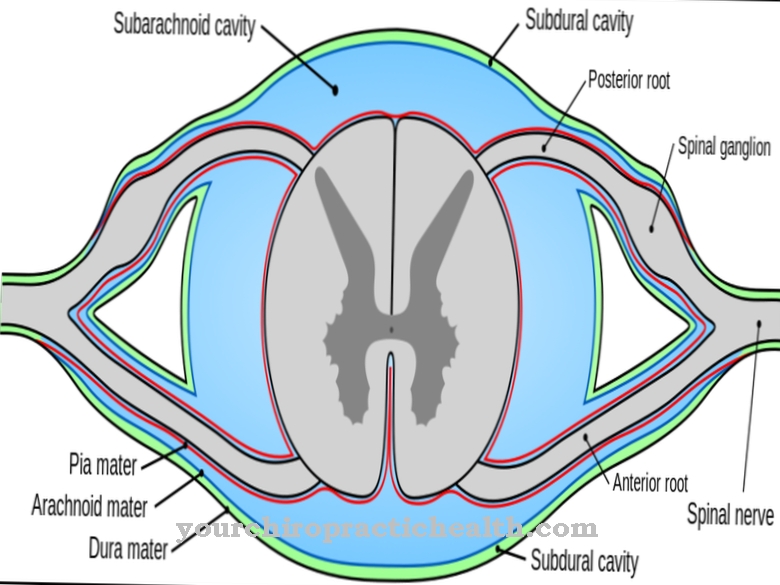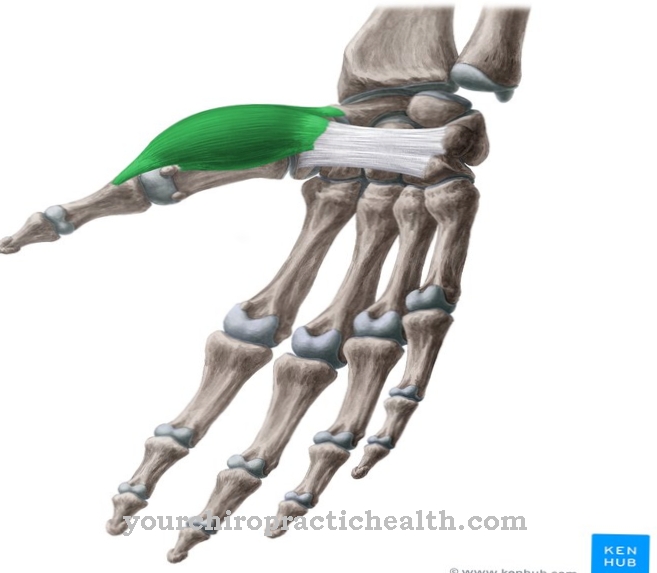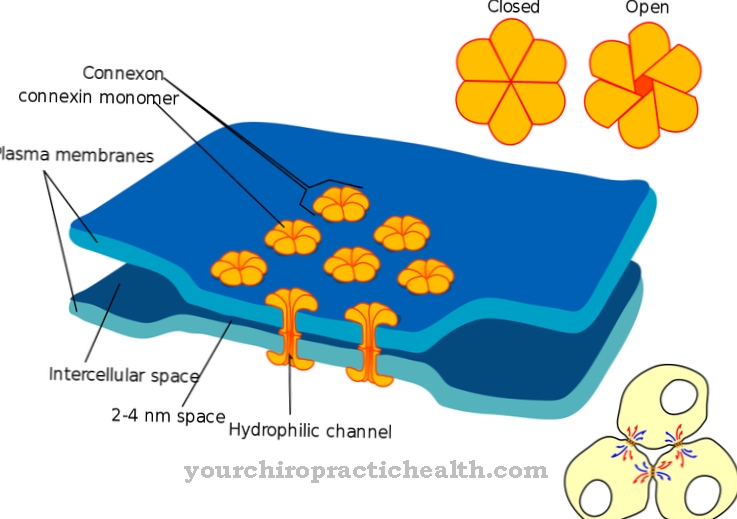In the middle ear of the human ear, there are three ossicles that are articulated to one another and transmit the mechanical vibrations of the eardrum to the cochlea in the inner ear.
The middle ossicle is called the anvil designated. It absorbs the vibrations of the hammer and transmits them to the stapes with mechanical reinforcement. The three ossicles are indeed the smallest bones in humans, but at the same time they are also very hard and firm in order to be able to transmit vibrations with as little loss as possible.
What is the anvil?
The anvil (Incus) is the heavyweight among the three ossicles in the middle ear, weighing around 27 milligrams. As the middle link of the three bones that transmit the sound vibrations of the eardrum to the inner ear, it is connected to the hammer via the Articulatio incudomallearis and to the stapes via the tiny Articulatio incudostapedia. The vibrations are transmitted to the stirrup using the leverage effect.
Because the lever arm from the fulcrum to the stirrup is shorter than the lever arm from the hammer joint to the fulcrum, the deflection of the anvil at the connection point to the stapes is shorter, but greater by a factor of 1.3. A further mechanical reinforcement by a factor of 17 then takes place through the transmission of the vibrations to the oval window, which, with an area of 3.2 sq mm, only reaches a seventeenth of the area of the eardrum (55 sq mm).
The mechanical amplification with a total factor of 22 (1.3 x 17) is necessary because the sound impulses from the compressible, gaseous, air with large amplitudes and low sound pressures to the incompressible, liquid, medium perilymph in the inner ear with low amplitudes but high sound pressures must be transferred. Like the other two ossicles, the anvil is made up of the hardest and most elastic bone material, so that there are only few losses due to deformation during the transmission of vibrations.
Anatomy & structure
The anvil can be anatomically divided into the body (corpus) and two legs, the long leg (crus longum) and the short leg (crus breve). The main mass - and therefore the center of gravity - is concentrated in the area of the body. This is also where the pivot point is located, so that very little mass has to be accelerated during vibration transmission and amplification. The long leg ends in the lens bone process (processus lenticularis), which is articulated with the stapes.
The anvil - like the other two ossicles - is covered by a mucous membrane. The two tiny muscles in the middle ear, the tympanic membrane tensioner (tensor tympani muscle) and the stapes muscle (stapedius muscle) only have an indirect effect on the anvil. The two muscles take on a protective function of the inner ear against very loud noises, such as. B. a bang, true.
While the stapedius muscle can weaken the efficiency of sound transmission through tension, good vibration transmission of the air vibrations to the eardrum requires tensioning of the eardrum tensioner - comparable to the tensioning of the head of large drums and timpani in a symphony orchestra. The anvil itself plays a more or less passive role as a link.
Function & tasks
The main task and function of the anvil is, in conjunction with the other auditory ossicles, to transmit the vibrations of the eardrum caused by airborne sound to the cochlea in the inner ear with mechanical reinforcement. This applies to the audible frequency range, which - depending on the sound pressure - is around 40 Hz to below 20,000 Hz. The frequency must not be changed and the different sound pressure (volume) must also be taken into account analogously.
The anvil uses a leverage effect to amplify the vibrations transmitted by the hammer by a factor of 1.3. Because the anvil, as the middle link within the ossicles, has no direct connection to the two small muscles of the middle ear, the eardrum tensioner and the stapes muscle, the transmission of vibrations is largely passive. The auditory ossicles also have a certain protective function for the sensory cells in the cochlea through the best possible transmission of sound vibrations.
In the case of very loud noises that are above the pain threshold or a sudden bang, the two muscles in the inner ear cause a reflex-like deterioration in sound transmission (stapedius reflex), so that a kind of conductive hearing loss is created to protect the sensory cells in the inner ear. Here, too, the anvil functions as a passive link in a mechanical “forced chain”.
You can find your medication here
➔ Medicines for earache and inflammationDiseases
Middle ear infections are the most common problems related to the conduction of sound in the three ossicles. The inflammatory processes that occur can reduce the efficiency of the mechanical vibration transmission, so that a temporary conductive hearing loss occurs. The hearing problems usually subside as soon as the otitis media has healed and irreversible damage to the middle ear or eardrum has not yet occurred.
In many cases, a tympanic effusion occurs in the course of the otitis media, an accumulation of serous, slimy, bloody or purulent fluid in the tympanic cavity immediately below the ossicles, which can additionally restrict the transmission of vibrations. If left untreated, otitis media can lead to chronic hearing loss if the inflammatory processes lead to permanent stiffening of the ossicles, to sclerotization. Such sclerotization, also known as calcification of the ossicles, is often the cause of hearing problems in older people.
Interestingly, if there are neuronal problems with the trigeminal nerve, the 5th cranial nerve, whose side branches innervate not only most of the facial muscles, but also the two tiny muscles in the middle ear, the stapedius reflex does not occur with very loud noises. Very loud noises are perceived as painful even at significantly lower sound pressures and there is no protective mechanism for the sensory cells in the cochlea.
Typical & common ear diseases
- Eardrum injuries
- Ear flow (otorrhea)
- Otitis media
- Ear canal inflammation
- Mastoiditis
- Ear furuncle
























.jpg)



